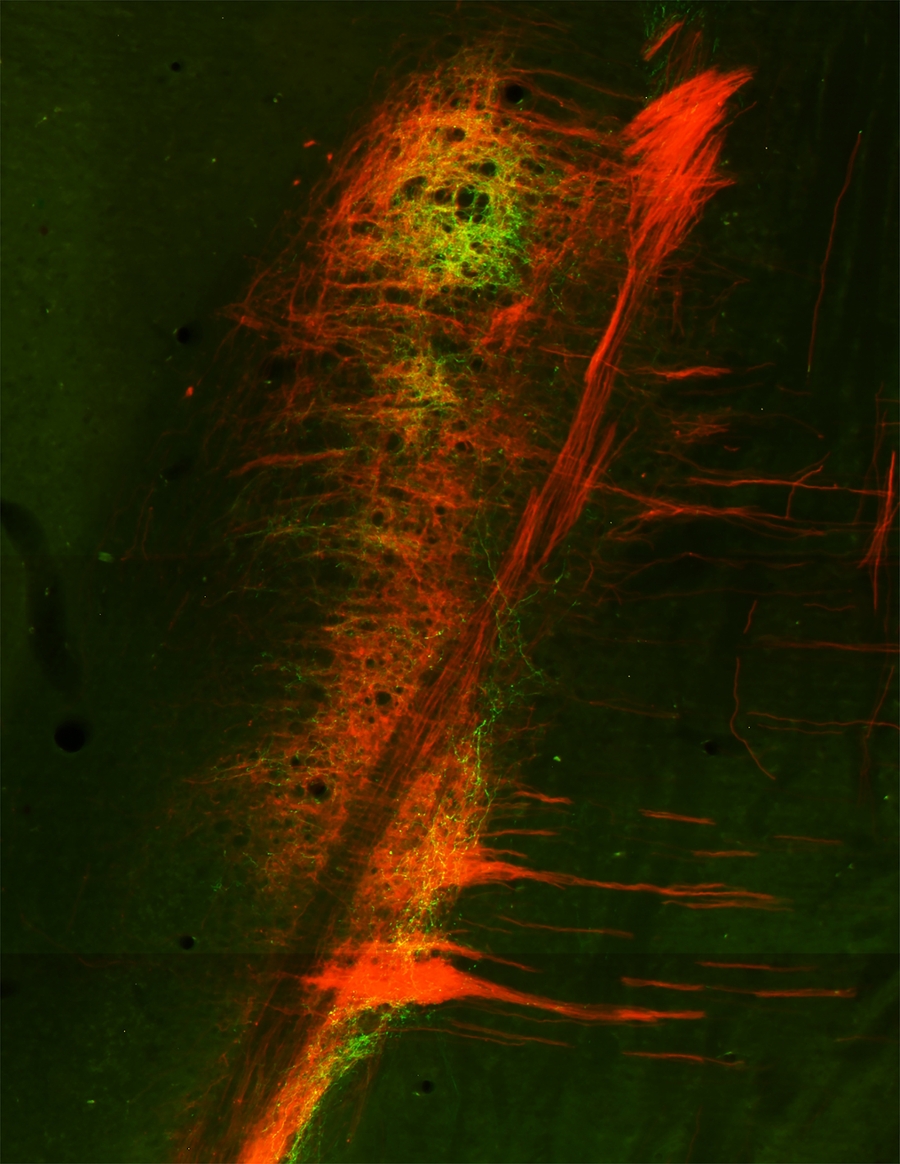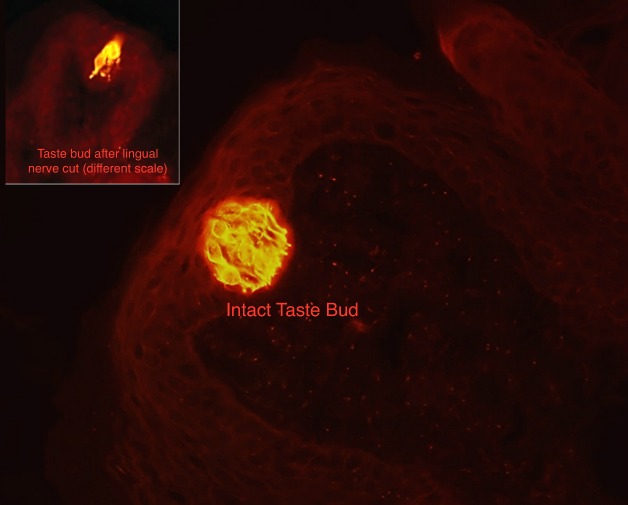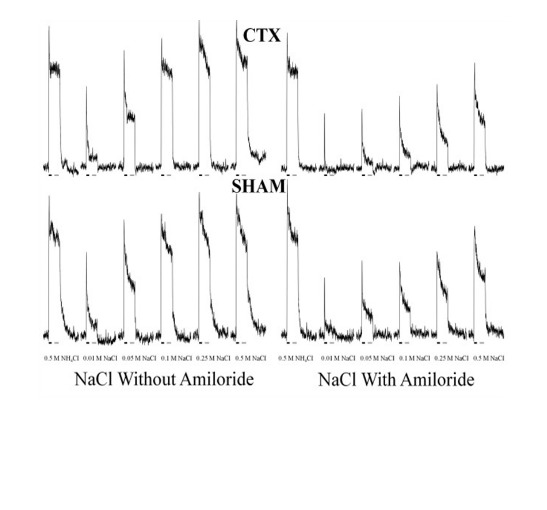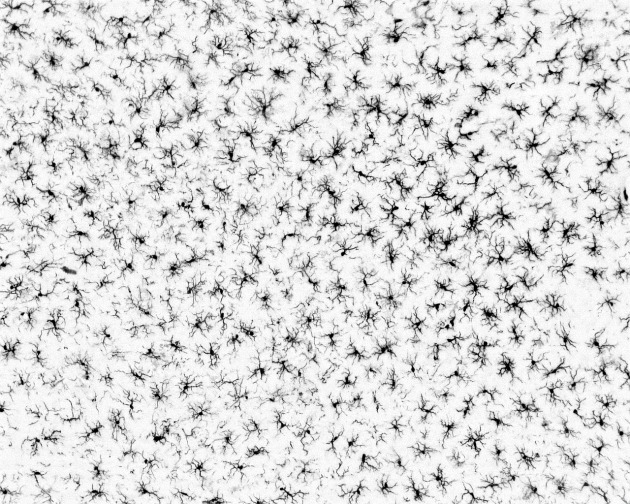Sensory System Development Lab

Greater superficial petrosal (green) and glossopharyngeal nerve (red) terminations in the brainstem. See publication here.

An intact fungiform taste bud from the anterior rat tongue, coronally sectioned at 10 um. A full complement of Cytokeratine-19 positive, taste receptor cells are evident. Following lingual nerve denervation, taste buds atrophy and contain only a few taste receptor cells (inset).

Displayed is the change in chorda tympani nerve activity during NaCl stimulation before and after applying the sodium channel blocker amiloride in a chorda tympani cut animal (CTX) and control rat (SHAM). Although the nerve responses to NaCl are not affected by neonatal injury, amiloride suppresses NaCl responses to a greater extent in CTX rats.

Microglia in the juvenile rat brainstem. Microglia are immune cells dispersed throughout the brain and spinal cord. They play roles in brain development, memory formation, neural maintenance, and recovery following injury. Microglia typically have small cell bodies and long, branching processes.
Welcome to Our Lab
The nervous system shows a great deal of plasticity, with the structure and function of neural circuits undergoing remarkable change following injury. This capacity for change often varies depending on the stage in development.
Our lab uses the taste and trigeminal systems to model injury-induced plasticity in developing and adult animals. By cutting sensory nerves during various stages of postnatal development, we assess the system’s capacity for plasticity and the importance of sensory input for typical development.
While many systems show greater capacity for recovery after injury at younger ages, we find that functional outcomes are generally poorer in younger animals for the taste and trigeminal systems. Sectioning taste nerves in early development results in permanent taste bud loss, a lack of nerve regeneration, abnormal taste preferences, and altered processing of taste information.
We are currently investigating variations in central glial and peripheral immune system responses to injury across development, functional and structural plasticity in the brain following early nerve loss, and interactions between nerves in supporting taste buds during development. Through these studies, we hope to better understand how sensory systems develop generally, and how the developing nervous system copes with injury.